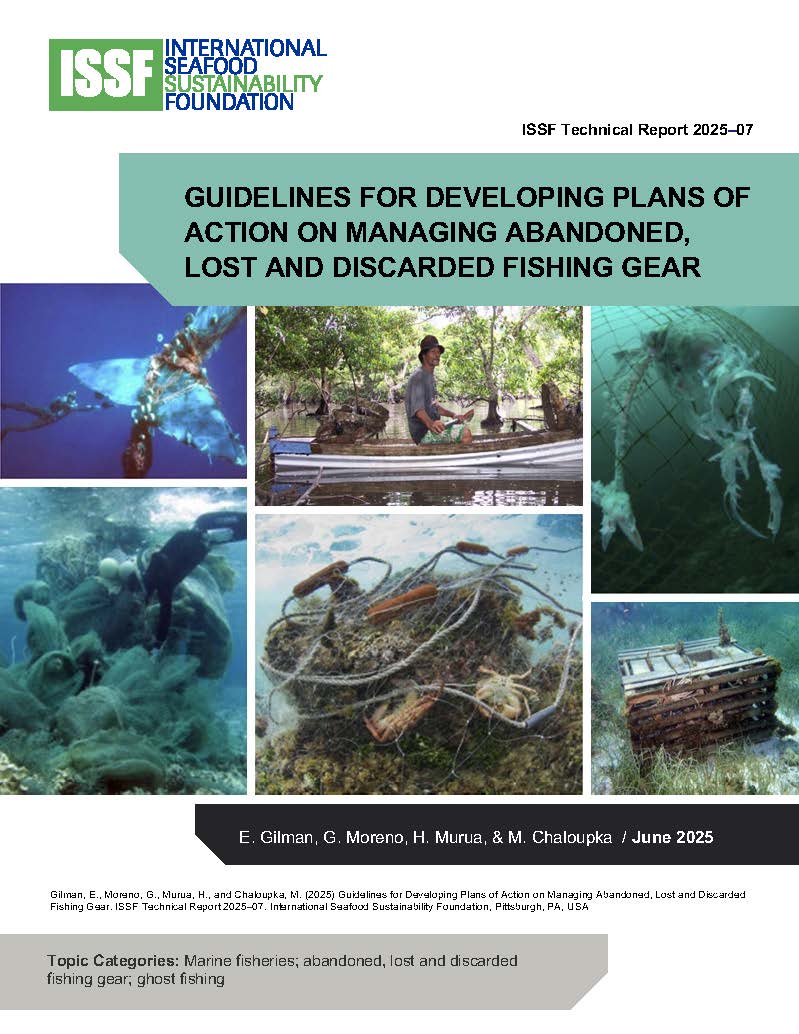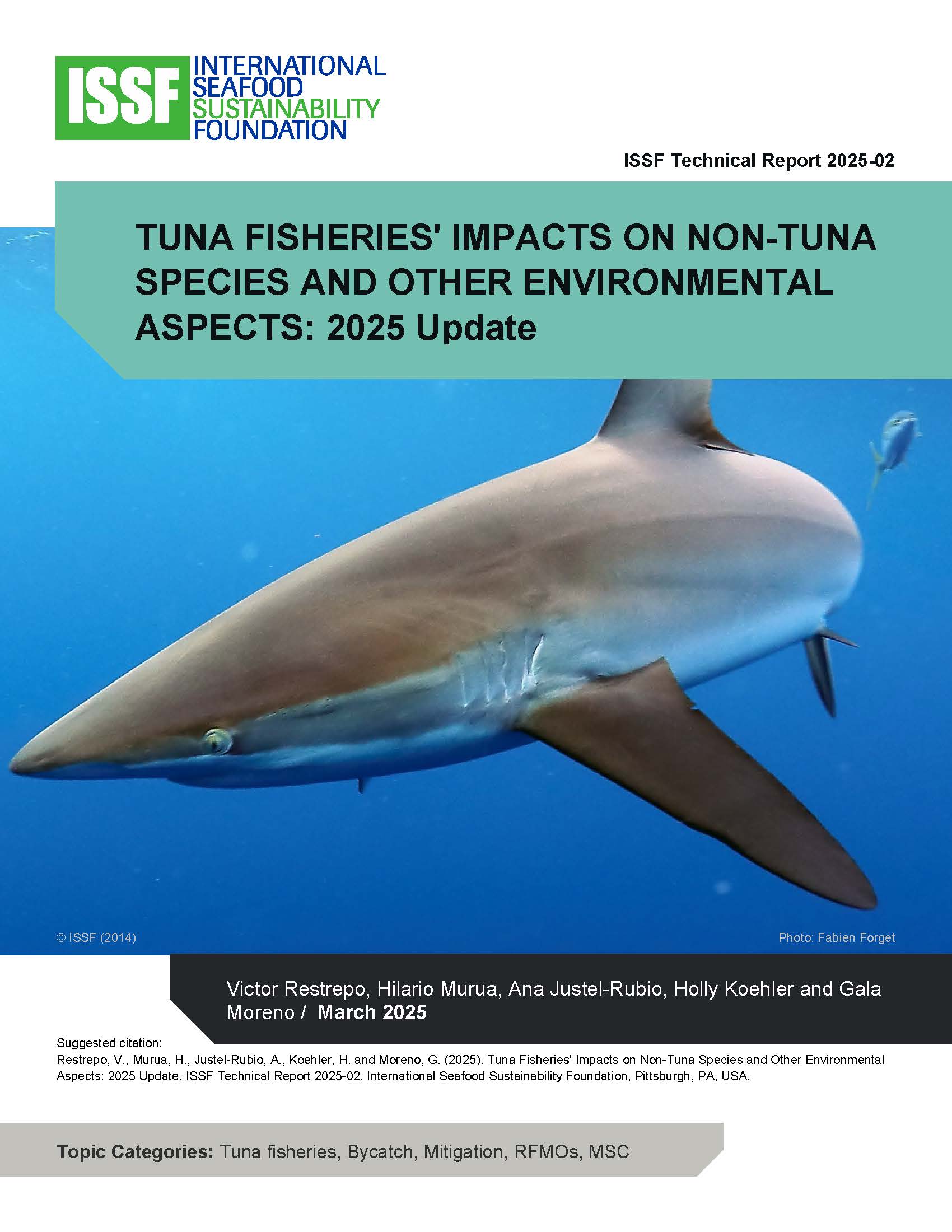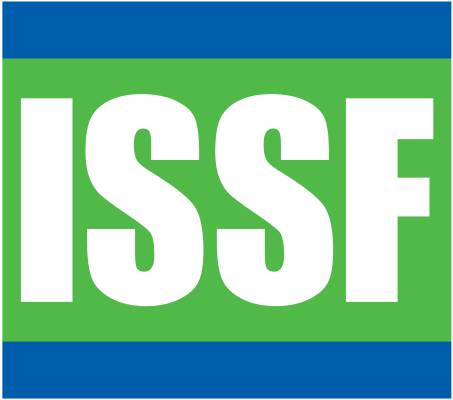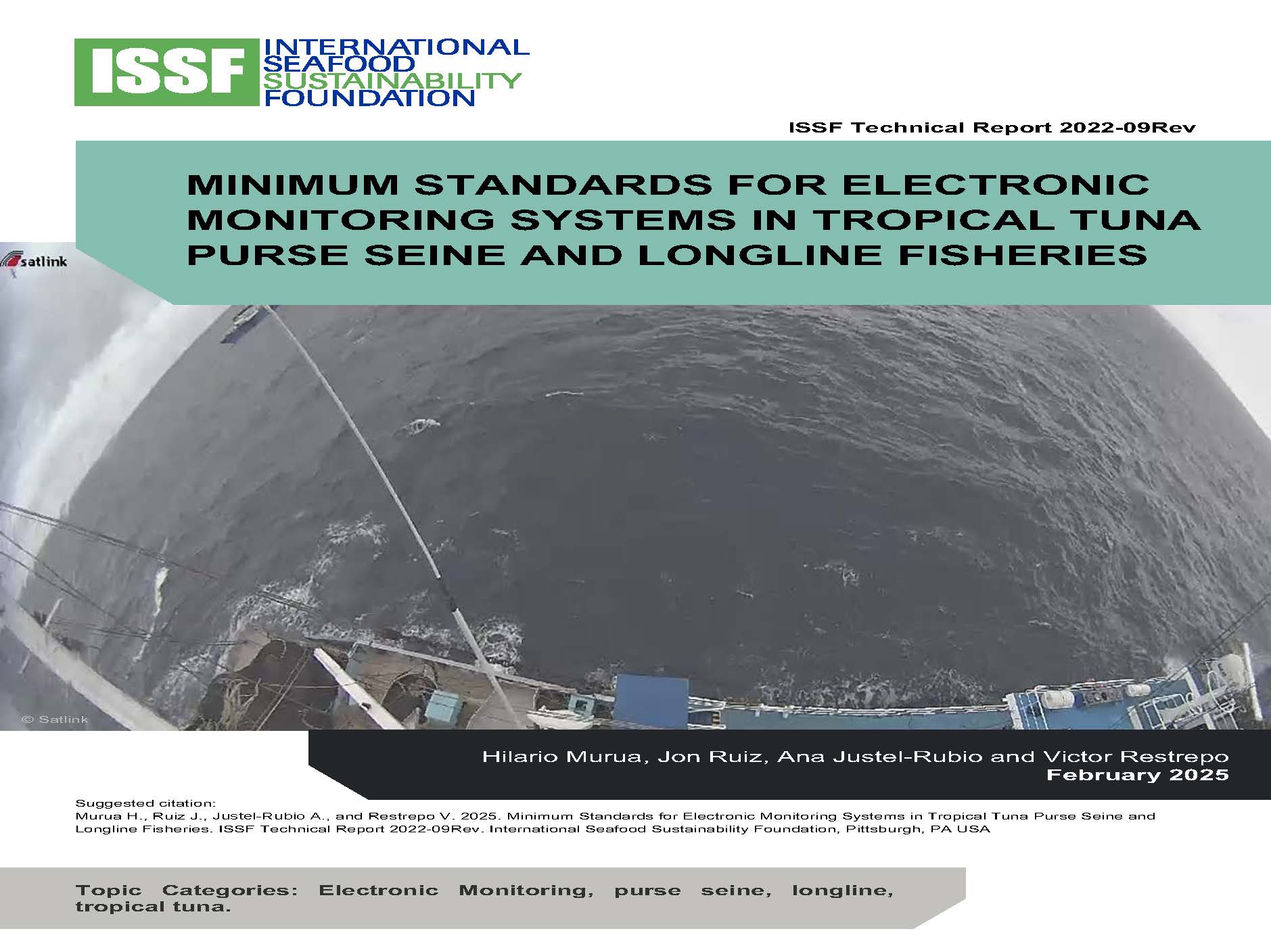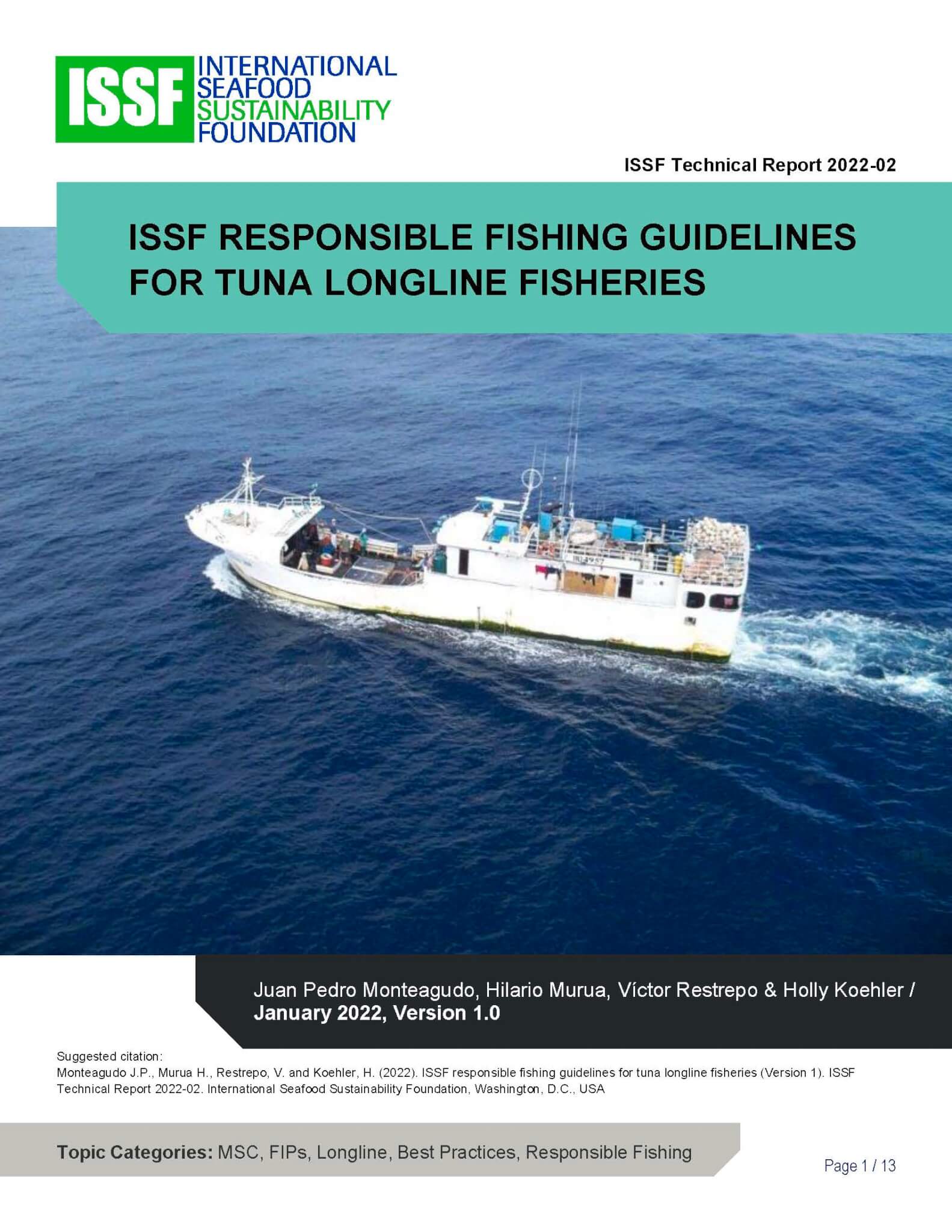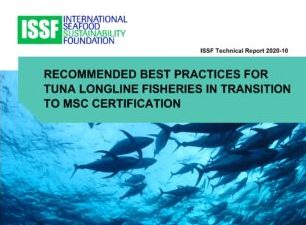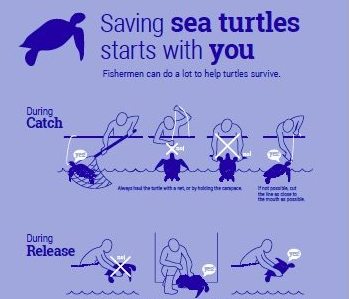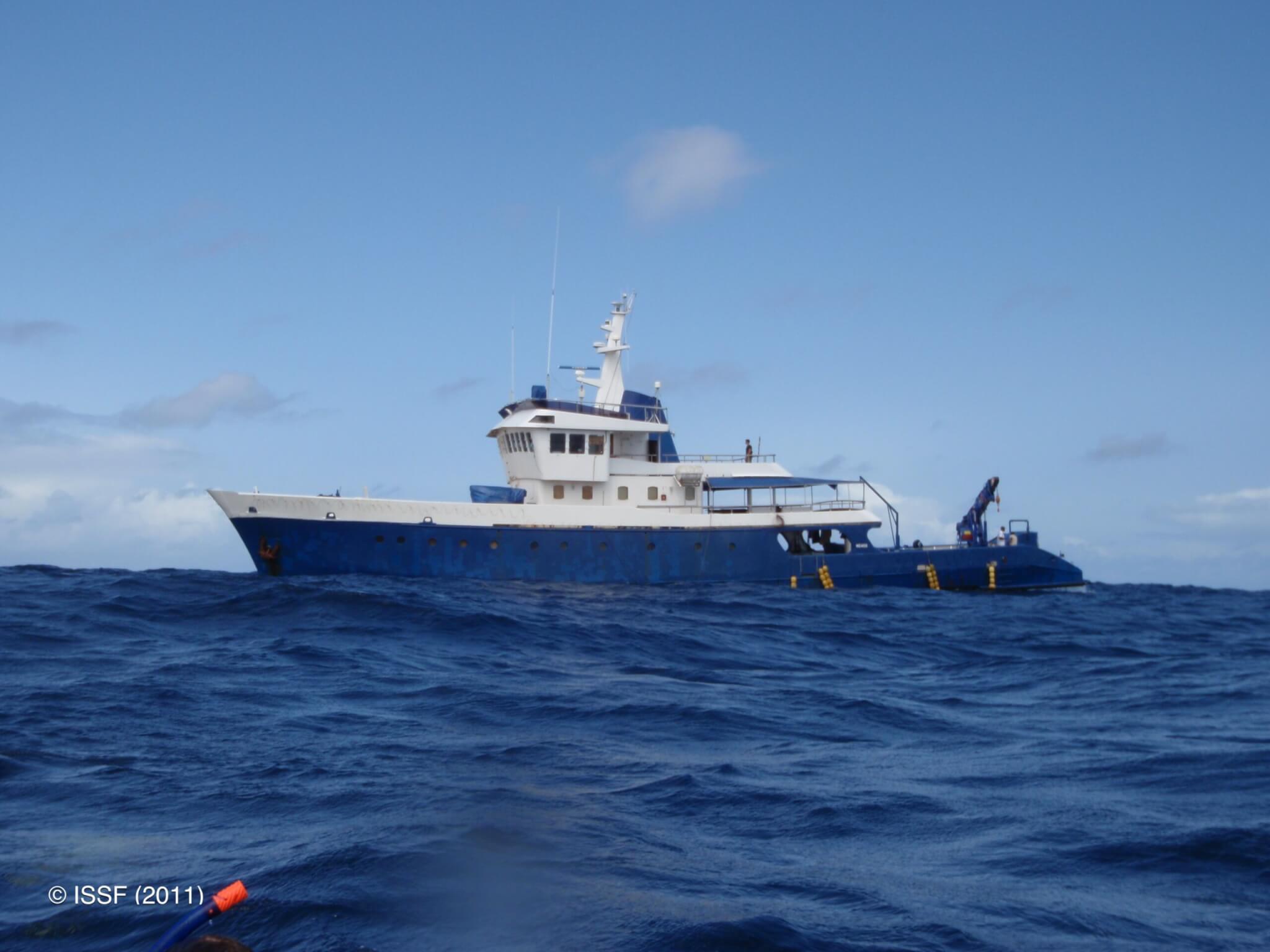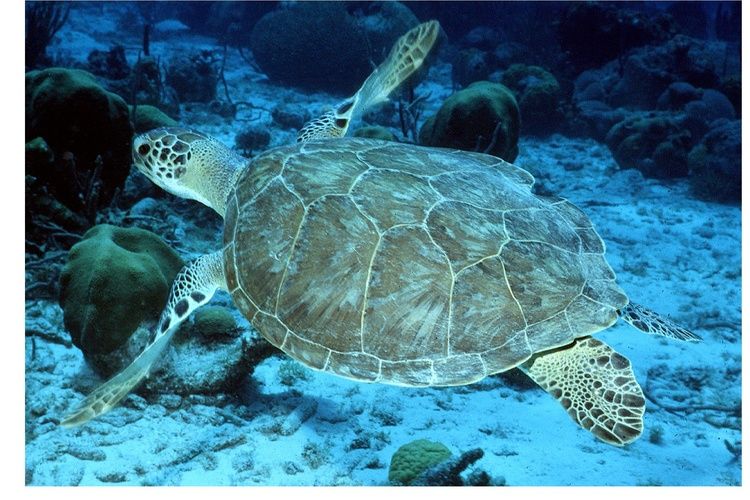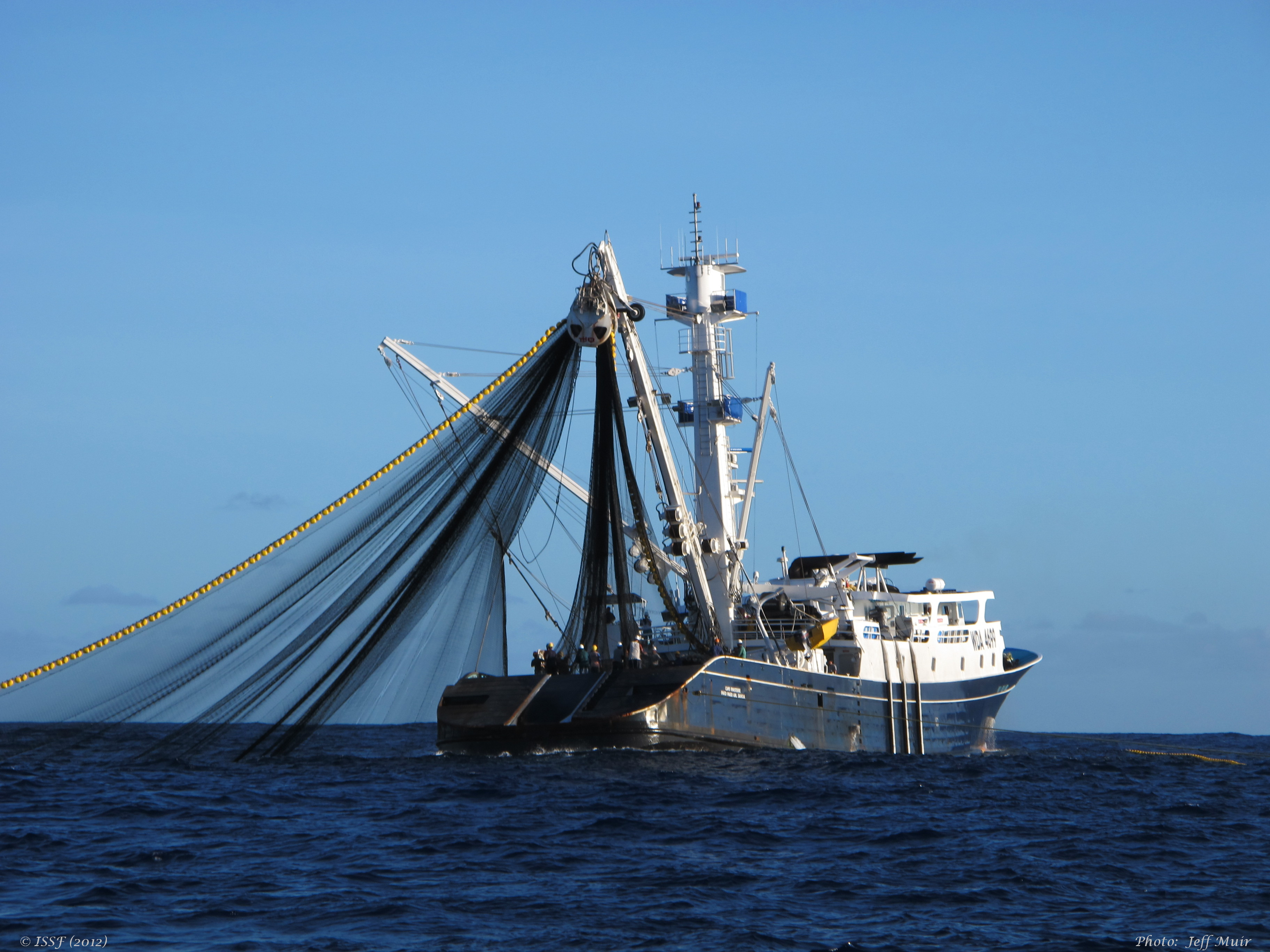Longline
The Longline fishing method is considered ideal for catching fish that inhabit deeper waters, such as albacore, bigeye and yellowfin.
Longline fisheries supply the fresh and frozen tuna markets, with many vessels also targeting other non-tuna species. Fish are caught one by one and frozen in blast freezing systems, the same freezing method used for sashimi.
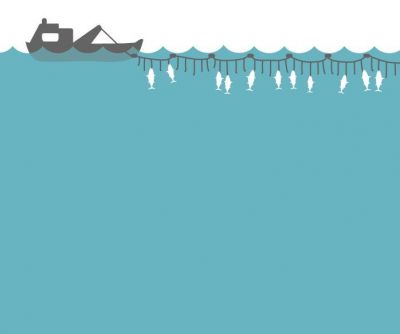
Bycatch
The average bycatch rate for longline fishing is more than 20% of the total catch. Mitigation methods, such as circle hooks and tori lines, have been developed to prevent the bycatch of marine life such as turtles and birds.
Our report, ISSF 2025-02: Tuna Fisheries’ Impacts on Non-Tuna Species and Other Environmental Aspects: 2025 Update*, examines the effects of different tuna-fishing methods on non-tuna species like sharks.
ISSF 2024-04: Inputs for Comprehensive Bycatch Management Strategy Evaluation in Tuna Fisheries defines bycatch management strategy considerations for several types of tuna fisheries, including longline.
Fuel Efficiency
According to an ISSF-commissioned study, ISSF 2025-03: Fuel Consumption and Greenhouse Gas Emissions from Global Tuna Fisheries: 2024 Updated Report, the longline method in 2023 used an average of 1,523.3 liters of fuel to land one ton of tuna.
LONGLINE RESOURCES
Longline Skippers Guides
On our ISSF Guidebooks site, we offer skippers guides for longline fishers, in both online and downloadable PDFs.
ISSF’s Longline Skippers Guidebooks provide an overview of sustainable fishing practices, including bycatch mitigation and handling and fisheries management.
Longline Tuna Catches
Use our “Interactive Stock Status and Catch Tool” to visualize the current longline tuna catch —and longline catch trends over time.
Download the data in different file formats, and generate custom graphics to share via email, Twitter, or Facebook.
